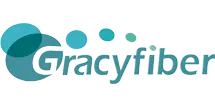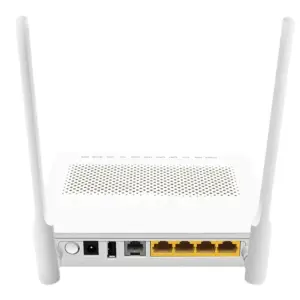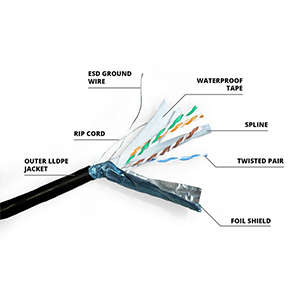Thank you for reading this article, I will introduce you to DAC and AOC, two high-speed data transmission connection solutions that play an important role in modern data communication. Whether it is a data center, server interconnect or storage network, DAC and AOC are key components, providing solutions for efficient and reliable data transmission.
Overview of DAC and AOC
DAC (Direct Attach Cable) and AOC (Active Optical Cable) are connection solutions for high-speed data communication. They provide reliable and high-performance connections and are widely used in data centers, servers, storage systems and network equipment.
DAC is a direct connect cable that combines the functions of fiber optic and cable. Both ends of it are equipped with SFP, QSFP or other types of optical modules for direct transmission of data signals. The DAC transmits electrical signals through the copper wires inside the cable, enabling high-speed data transmission. Due to the use of copper wires, the DAC features low latency and low power consumption.
AOC is an active optical cable that uses optical fiber as the transmission medium and is equipped with electronic devices to amplify and regulate optical signals. Both ends of the AOC are also equipped with optical modules, but when the optical fiber transmits data, the optical signal is enhanced by an amplifier to ensure signal quality and transmission distance. AOC has longer transmission distance and better anti-interference performance.
How DAC and AOC work
There are some differences in working principles and structures between DAC (Direct Attach Cable) and AOC (Active Optical Cable).
How DAC works:
DACs use copper wires to transmit electrical signals. Both ends of the DAC are equipped with optical modules, one of which converts electrical signals into optical signals, and the other optical module converts optical signals back into electrical signals. Inside the DAC’s cable, there are multiple pairs of copper wires used to transmit differential signals. These copper wires can transmit data through changes in electrical signals to achieve high-speed data transmission.
Structural features of DAC:
The external structure of the DAC is similar to a cable, equipped with optical modules and connectors at both ends. The connector type is usually SFP, QSFP or other types of connectors, depending on the type of optical module. The DAC has a simple structure and no additional electronic devices, so it has the characteristics of low latency and low power consumption. In addition, due to the use of copper wires, the DAC’s structure is relatively strong and can withstand certain physical bending and pulling forces.
How AOC works:
AOC uses optical fiber to transmit optical signals. Both ends of the AOC are also equipped with optical modules. One optical module converts electrical signals into optical signals, and the other optical module converts optical signals back into electrical signals. AOC’s optical signals are transmitted through connectors and optical fibers. AOC also contains electronic devices, such as amplifiers and regulators, to amplify and adjust the intensity and quality of optical signals. These devices ensure signal stability and extension of transmission distance.
Structural features of AOC:
The external structure of the AOC is similar to an optical cable, and both ends are also equipped with optical modules and connectors. The connector type is also usually SFP, QSFP or other types of connectors. The structure of AOC is more fragile than that of DAC and requires more careful handling and installation to avoid damage to the optical fiber. The electronics inside the AOC require power, usually through wires on the connector.
Performance indicators of DAC and AOC
There are some differences in performance indicators between DAC (Direct Attach Cable) and AOC (Active Optical Cable). The following will introduce the differences in their main performance indicators and application scenario requirements.
Transmission rate:
- Both DAC and AOC support multiple transmission rates, including 10Gbps, 25Gbps, 40Gbps, 100Gbps, etc. They can meet the needs of high-speed data transmission in different application scenarios.
Transmission distance:
- The transmission distance of DAC is usually short, generally in the range of several meters to more than ten meters. This is suitable for scenarios such as data centers that require short-distance connections.
- AOC has a longer transmission distance, which can reach tens of meters, hundreds of meters or even further. This makes AOC perform well in scenarios requiring long-distance transmission, such as cross-rack connections or remote data transmission.
Power consumption:
- A DAC typically has lower power consumption because it uses copper wires to transmit electrical signals, which have lower resistance and energy loss.
- AOC may have higher power consumption in comparison because it requires electronics to amplify and condition the light signal. However, modern AOC products have improved in terms of power consumption to provide higher energy efficiency and reduce energy consumption.
Differences in application scenario requirements:
- Data center: Data centers have high requirements for high-speed and high-density connections, so both DAC and AOC are widely used in this field. DAC is suitable for short-distance connections, such as the interconnection between servers and switches, while AOC is suitable for long-distance connections, such as cross-rack connections or long-distance transmission between data centers.
- Enterprise Networks: In enterprise networks, DACs are often used to connect servers to network devices because they are usually located within a relatively short distance. AOC has relatively few applications in enterprise networks, and is mainly used in scenarios that require long-distance transmission.
Advantages and disadvantages of DAC and AOC
There are some differences between DAC (Direct Attach Cable) and AOC (Active Optical Cable) in terms of their respective advantages and disadvantages. They will be compared below.
Advantages of DAC:
- Low latency: DAC uses copper wires to transmit signals, which has fast signal transmission speed and low latency. This makes DAC ideal for applications with high latency requirements, such as server interconnects within data centers.
- Low cost: Compared with AOC, the manufacturing cost of DAC is lower because it does not require optical modules and electronic devices. This makes DACs a more affordable option, especially for short-distance connections.
- Easy to deploy: DAC has a simple structure and can be deployed simply by inserting the connector into the corresponding port. No configuration or debugging is required, reducing deployment complexity and time costs.
Advantages of AOC:
- Longer transmission distance: AOC uses optical fiber to transmit signals and has longer transmission distance capabilities. It can provide stable signal transmission over distances of tens of meters, hundreds of meters or even longer, and is suitable for cross-rack connections or scenarios requiring remote transmission.
- High bandwidth and high rate: AOC supports higher transmission rates and can meet the demand for high bandwidth and high rate. This makes AOC widely used in fields such as data centers and high-performance computing.
- Anti-electromagnetic interference: Optical fiber transmission has good electromagnetic compatibility and can effectively resist electromagnetic interference. This makes AOC perform more reliably in scenes with poor electromagnetic environments.
Disadvantages of DAC:
- Transmission distance limitation: Due to the use of copper wires to transmit signals, the transmission distance of DAC is usually short, generally in the range of several meters to more than ten meters. For scenarios requiring longer distance transmission, DAC may not be able to meet the needs.
- Limited flexibility: The length of the DAC is usually fixed and cannot be adjusted according to actual needs. If connections of different lengths are required, DACs of different lengths need to be prepared.
Disadvantages of AOC:
- Higher cost: Compared with DAC, the manufacturing cost of AOC is higher because it requires optical modules and electronic devices to convert and adjust optical signals.
- Difficulty of troubleshooting: AOC contains electronic devices and optical fibers, so troubleshooting and maintenance are relatively complicated. Once the AOC fails, more professional technicians are often required to repair it.
Application scenarios of DAC and AOC
DAC (Direct Attach Cable) and AOC (Active Optical Cable) are widely used in different fields. Here are examples of their use in several common areas:
Data center:
- DAC and AOC are widely used in server interconnections and connections between network devices in data centers. They provide high-speed, high-density connections that meet the performance and reliability requirements of data centers.
- Application case: Use DAC or AOC for short-distance connections between servers and switches in the data center to achieve high-speed data transmission and low-latency communication.
Storage network:
- DAC and AOC can be used for connections between storage devices and storage switches in a storage network. They provide high-bandwidth and low-latency connections, enabling fast storage data transfers.
- Application case: In a storage network, use DAC or AOC to connect storage servers and storage switches to achieve high-performance storage access and data transmission.
High performance computing (HPC):
- DAC and AOC are widely used in high-performance computing to connect supercomputers, computing nodes and high-speed internet networks. They provide high speed, low latency and reliable data transmission.
- Application case: In a high-performance computing cluster, use DAC or AOC to connect computing nodes and the Internet to achieve high-performance parallel computing and data exchange.
Virtualization environment:
- DAC and AOC can be used for server interconnection in virtualized environments, supporting high-speed data transfer and communication between virtual machines.
- Application case: In a virtualized data center, use DAC or AOC to connect servers to achieve fast data exchange and communication between virtual machines.
Cloud Computing Center:
- DAC and AOC are used in cloud computing centers for connections between servers, storage devices and network devices to support large-scale cloud services and data transmission.
- Application cases: In cloud computing centers, use DAC or AOC to connect cloud servers, storage devices and network devices to achieve high-performance cloud services and data center interconnection.
Suggestions on selection and deployment of DAC and AOC
When choosing DAC (Direct Attach Cable) and AOC (Active Optical Cable), the following are some key points and suggestions:
Selection points:
- Transmission distance requirements: First, determine the required transmission distance. If you need a short-distance connection (usually in the range of a few to ten meters) and have a limited budget, a DAC is an affordable option. If you need a longer-distance connection (tens of meters, hundreds of meters or even further), you need to consider using AOC.
- Budget constraints: Budget is an important factor in choosing DAC or AOC. Generally speaking, DACs have low manufacturing costs and relatively low prices, making them suitable for scenarios with limited budgets. The manufacturing cost of AOC is relatively high, and the price is relatively high, so it is suitable for scenarios that require high performance and transmission distance.
- System compatibility: Ensure that the optional DAC or AOC is compatible with the interface and standards of the target device. Different devices may use different types of connectors and protocols (such as SFP, QSFP, InfiniBand, etc.), and their compatibility needs to be confirmed.
Deployment strategy:
- Cabling planning: Before deploying a DAC or AOC, cabling planning is key. Consider the transmission distance, device location and cabling path, select a DAC or AOC of appropriate length, and ensure that the cabling path meets safety and management requirements.
- Fault isolation: When deploying DAC or AOC, ensure that there is an appropriate fault isolation strategy in place. This includes the provision of a spare DAC or AOC, and the ability to quickly replace and repair connections in the event of a failure.
- Performance optimization: In order to obtain the best performance, you need to pay attention to the following points:
- Make sure to use the appropriate DAC or AOC to meet the required bandwidth and rate requirements.
- Avoid long connections, as long distance transmission may cause signal attenuation and reduced transmission quality.
- Regularly check and clean the connector of the DAC or AOC to ensure good signal transmission and stability.
- Adopt appropriate optical modules and protocols as needed to support required functionality and performance.
Conclusion:
As high-speed data transmission connection solutions, DAC and AOC play an important role in the field of data communication. DAC uses copper wires to transmit electrical signals, which has the advantages of low latency, low cost, and easy deployment; while AOC transmits optical signals through optical fibers, overcoming transmission distance limitations and providing higher flexibility and future scalability.
If you are interested in DAC and AOC, please consider contacting us, we will provide you with professional advice and support to help you choose the DAC and AOC solution that suits your needs, achieving efficient data communication and excellent network performance.
- What is the difference between active DAC and AOC?
- What is the difference between 100G AOC and DAC?
- What is DAC in optics?
- What is a DAC cable?
- What is DAC and AOC cable?
- Is a DAC cable fiber?
- What is AOC cable used for?
- What are the disadvantages of a DAC cable?
- What is an AOC cable?



